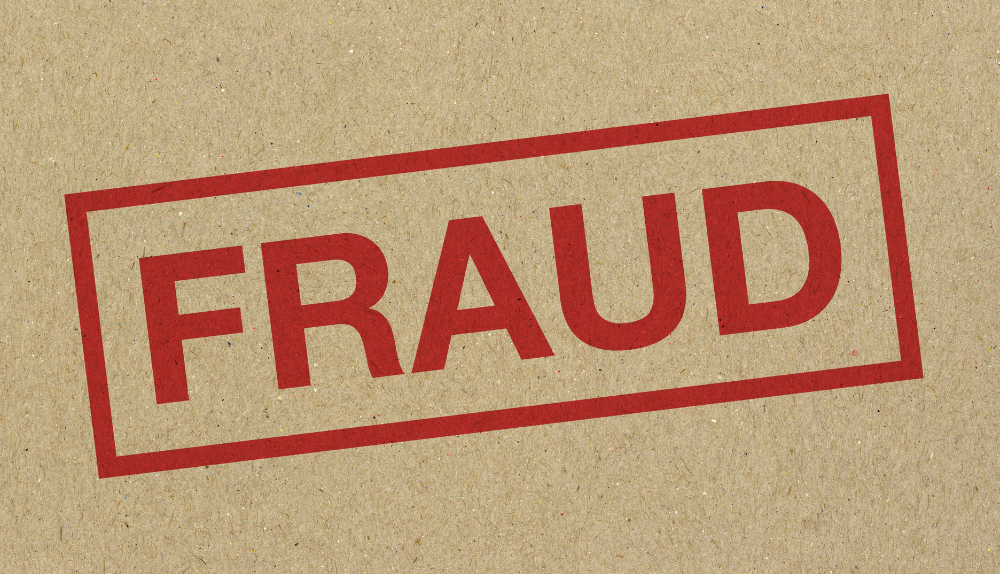
Tools Safeguarding Your Business Against Credit Card Fraud
- 06th Jul, 2023
- | By max
- | Uncategorized
In today’s digital age, credit card fraud has become a pervasive issue that businesses of all sizes must contend with. The impact of such fraud can be devastating, leading to significant financial losses and damage to a company’s reputation. As such, businesses must implement robust tools and strategies to combat credit card fraud effectively. Today we will discuss tools safeguarding your business against credit card fraud.
Credit card fraud is an extensive issue with global implications for businesses. A report from Nilson reveals that in 2019, the losses from card fraud reached a staggering $28.65 billion worldwide, placing a significant burden on businesses. However, the consequences of credit card fraud extend beyond financial losses.
It erodes customer trust, damages a company’s reputation, and in severe cases, poses a genuine threat to a business’s survival. The surge in online transactions has further exacerbated the prevalence of credit card fraud as fraudsters exploit security vulnerabilities. Card-not-present (CNP) fraud, which occurs in transactions without a physical card, such as online shopping, has become particularly widespread.
A study conducted by Juniper Research predicts that CNP fraud will escalate to $130 billion by 2023. Given these alarming statistics, it’s clear that businesses must prioritize implementing tools and strategies to combat credit card fraud.
This includes adopting secure payment technologies, implementing robust authentication processes, educating employees about fraud detection, and staying updated on the latest fraud trends and prevention techniques. By taking proactive steps to combat credit card fraud, businesses can protect their financial assets, safeguard their reputation, and foster trust with their customers.
Understanding Credit Card Fraud
Credit card fraud is a comprehensive phrase that covers all forms of fraudulent or unauthorized use of credit or debit cards. This illicit activity can occur when a card is physically stolen, the card information is copied (skimming), or card details are acquired through underhanded methods like phishing or hacking into a company’s database.
Businesses should familiarize themselves with various forms of credit card fraud to safeguard against potential risks:
Identity Theft: A fraudster obtains personal information about a cardholder, such as their full name, address, or date of birth, and uses it to make unauthorized transactions or even open new credit accounts in the cardholder’s name.
Data Breaches: A breach happens when an unauthorized party gains access to a business’s secure data, often through hacking. This data can include customer credit card information, which can be used for fraudulent transactions.
Card-Not-Present (CNP) Fraud: CNP fraud is a type of fraud that occurs when a transaction is made without the physical card being present. This is common in online shopping, where only card information is required. CNP fraud has been on the rise with the increase in online transactions.
Chargeback Fraud: Referred to as “friendly fraud,” the process entails a consumer using their credit card to purchase, subsequently requesting a chargeback from their financial institution. In this deceptive scenario, the customer falsely asserts that they did not receive the purchased item or that the transaction was unauthorized.
Understanding these types of fraud is the first step towards developing effective strategies to prevent them and protect your business.
Tools Safeguarding Your Business Against Credit Card Fraud
The Role of EMV Chip Card Readers in Fraud Prevention
EMV chip technology, known as such due to its collaboration between Europay, Mastercard, and Visa, has become a worldwide standard for facilitating credit and debit card payments.
Diverging from traditional magnetic stripe cards that retain static information, EMV chip cards create an exclusive transaction code for each payment, rendering it exceedingly challenging for malicious individuals to exploit the card details for subsequent transactions.
EMV chip cards significantly reduce the risk of in-person credit card fraud. When used with an EMV-compliant card reader, the card and the reader communicate to authenticate the transaction, making it much harder for fraudsters to skim or duplicate the card.
In addition to providing enhanced security, the introduction of EMV chip technology has led to a shift in fraud liability. Before the introduction of EMV chips, credit card issuers were generally responsible for covering the costs of fraudulent transactions. However, since October 2015, the liability for fraudulent transactions has shifted to the least EMV-compliant party in a fraudulent transaction.
If a business does not use an EMV-compliant card reader and a fraudulent transaction occurs, the business may be held financially responsible for the loss. This liability shift strongly incentivizes businesses to adopt EMV technology and protect themselves from the financial and reputational damage caused by credit card fraud.
Strong Customer Authentication (SCA)
Strong Customer Authentication (SCA) is a mandatory requirement established by the European Union in the Revised Directive on Payment Services (PSD2) for payment service providers operating within the European Economic Area. Its main purpose is to enhance the security of electronic payment transactions by implementing multi-factor authentication.
SCA necessitates the utilization of a combination of two out of the following three elements to authenticate transactions:
Knowledge: The user only knows something, such as a password or PIN.
Possession: Something only the user possesses, such as a token or a smartphone.
Inherence: An individual, for instance, the user, possesses a distinctive biometric characteristic, such as a fingerprint or facial recognition.
Applying these elements in the authentication process makes it difficult for fraudsters to make a payment without having access to at least two of these factors, thereby significantly reducing the risk of fraud.
While SCA is a requirement in the European Economic Area, its principles are universally applicable and beneficial. By implementing SCA, businesses worldwide can add an extra layer of security to their payment processes, thereby protecting themselves and their customers from significant credit card fraud.
Address Verification Service (AVS) and Card Verification Value (CVV)
Address Verification Service (AVS) and Card Verification Value (CVV) are two essential tools used in credit card processing to prevent Card-Not-Present (CNP) fraud, which typically occurs during online or over-the-phone transactions.
AVS serves as a mechanism to authenticate the identity of individuals asserting credit card ownership. The system verifies the user’s provided billing address against the address registered with the credit card company. If the addresses fail to match, the transaction may be rejected.
This precautionary measure is necessary as fraudulent individuals often employ stolen card details without possessing the genuine billing address of the cardholder.
The CVV is a security measure specifically designed for card-not-present payment card transactions. It consists of a 3 or 4-digit number that is visibly printed on the credit card itself but is not encoded within the card’s magnetic stripe or embedded chip.
As a result, during in-person transactions where the card is physically presented to a merchant, the CVV is typically not required. Consequently, the correct provision of the CVV necessitates physical possession of the card.
A newer version of CVV, known as dynamic CVV2 (dCVV2), enhances online transaction security even further. Instead of having a static 3 or 4-digit number, the dCVV2 changes periodically (for example, every 48 hours) and can only be used for a single transaction. This makes it even more difficult for fraudsters to use stolen card information for online transactions, as they would also need to have the current dCVV2 at the transaction time.
Cybersecurity Insurance
Cybersecurity insurance has become an indispensable safeguard for businesses today, where data breaches and cyber threats are alarmingly prevalent. This specialized insurance coverage is vital in minimizing the monetary repercussions of diverse cyber incidents, such as network harm, data breaches, and disruptions to business operations. Cybersecurity insurance can cover a range of costs associated with a cyber-incident.
This can include immediate response costs, such as hiring a forensics team to identify the source of the breach, notifying affected customers, and providing credit monitoring services. It can also cover legal fees, public relations efforts, and even regulatory fines and penalties that may result from the breach.
Moreover, cybersecurity insurance can cover the loss of income from a business interruption caused by a cyber-attack. This can be particularly important for small businesses, which may need more financial reserves to withstand a prolonged operation interruption.
While cybersecurity insurance cannot prevent a cyber-attack or data breach, it can provide a financial lifeline in the aftermath of such an event. By transferring some of the financial risks associated with cyber threats to an insurance company, businesses can focus on their recovery and maintain their operations with minimal disruption.
Chargeback Fraud and How to Mitigate It
Chargeback fraud, commonly referred to as friendly fraud, entails an act of credit card fraud wherein a customer disputes a charge made on their credit card to obtain a refund while keeping the purchased product or received services. This deceptive practice can have severe repercussions for businesses, leading to significant financial losses in sales revenue and inventory and the imposition of supplementary chargeback fees.
Chargeback fraud can occur for various reasons. Sometimes, it’s a genuine mistake—a customer might not recognize a transaction on their statement, for example. However, in other cases, it’s a deliberate act of fraud.
There are several strategies businesses can use to prevent chargeback fraud:
Contest Chargebacks: If a business believes a chargeback is unjustified, it can contest it through a chargeback representment. This involves providing the credit card issuer with evidence that the transaction was legitimate.
Require Returns on Damaged Items: By requiring customers to return damaged items before issuing a refund, businesses can prevent situations where customers claim a product was faulty or not as described, initiate a chargeback, but then keep the product.
Participate in Visa’s Order Insights and Mastercard’s Ethoca Programs:
These programs warn businesses early of disputes and potential chargebacks, allowing them to issue a refund proactively and avoid the chargeback process. They also provide valuable data that can help businesses identify patterns of fraudulent behavior and take preventive action.
By implementing these strategies, businesses can protect themselves against chargeback fraud and associated costs.
Additional Measures to Protect Your Business from Credit Card Fraud
Beyond the specific tools and strategies discussed earlier, there are additional measures that businesses can take to further protect themselves from credit card fraud:
Setting Spending Limits for New Customers: By setting a spending limit for new customers, businesses can limit their exposure to potential fraud. This can be particularly effective for online businesses, where verifying a customer’s identity takes more work. Once a customer has established a history of legitimate transactions, the spending limit can be gradually increased.
Monitoring Patterns of Returns Among Past Customers: Regularly reviewing your transaction history can help identify patterns that may indicate fraudulent activity. For example, if a customer frequently makes large purchases and then requests refunds, it could be a sign of ‘ward robing’ (buying products to use them once and then returning them) or other types of return fraud.
Watching Out for Unusual Buying Patterns: Unusual buying patterns, such as multiple high-value purchases in a short period, multiple transactions on the same day, or multiple orders being shipped to the same address but made with different cards, can all be indicators of potential fraud. Implementing a system to flag these types of transactions for review can help catch fraudulent activity early.
By staying vigilant and implementing these additional measures, businesses can further reduce their risk of falling victim to credit card fraud.
Conclusion
Safeguarding your business against credit card fraud is crucial and a valuable investment in your company’s future. By comprehending the various forms of fraud and implementing the tools and strategies outlined in this article, businesses can effectively protect their operations and financial well-being from the detrimental consequences of credit card fraud.



